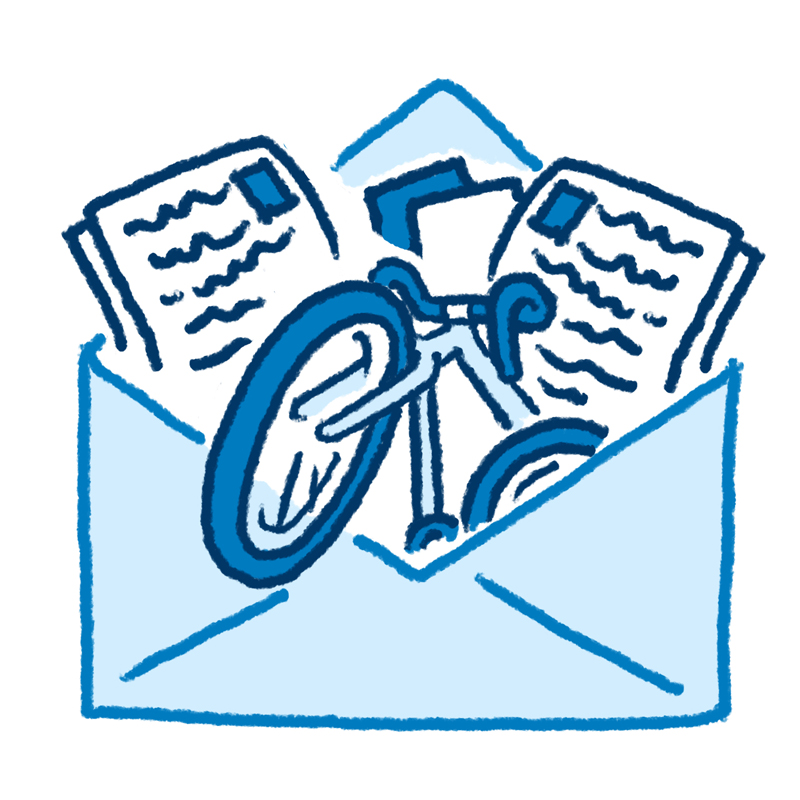Canal Queens Take on the Empire State: Beginners Guide to the Northern Tier Section 10
There are many shades of adventure, and you have to start somewhere. I’ve learned from over 20 years of riding and leading group rides that adventurous cycling at any level results in a sense of competence, accomplishment, wonder, and joy. I’m an avid mountain biker, road rider and more recently enjoy gravel riding in New England, but I have never bikepacked or completed a multi-day cycling trip. I learned about the 750-mile Empire State Trail in New York and was intrigued by the 360-mile Erie Canal section: virtually flat, 60% paved, and 87% car free. That sounded about my speed!
I talked two 50-something girlfriends into joining me, but a real bed and hot shower were their requirements for the seven-day ride from Buffalo to Albany. As newbies, we decided that carrying all our gear was not ideal, so I wrangled us a sherpa/sag wagon. A very kind friend drove our stuff between each night’s lodging and was on-call if disaster struck. He managed to pedal 200 miles over the week plus enjoyed sightseeing, laughter, beer, and a few good meals. My sister lives in Buffalo and she has just started riding regularly. Our first 50-mile leg was her personal challenge, and I rode it with her. Win-win-win!

Coincidentally, almost 90 miles of our route is part of Adventure Cycling’s Northern Tier Route, which crosses the country from Washington to Maine including a short jaunt through Canada. This year is the 40th anniversary of the creation of the Northern Tier route.
I planned our trip following New York’s Erie Canalway, an engineering marvel of the 1800s which allowed goods and people to travel faster from New York City to Buffalo via waterways and canal locks on mule-drawn boats. The old mule paths that run east to west between Albany and Buffalo now form a multi-use trail that is 60% paved and 40% stone dust (and a smidge of gravelly dirt). Many parts of the trail are still along active waterways with modernized locks that allow boats to travel from the Hudson River to Lake Erie. Towns along the way offer historic signage about the canalway plus places to sleep (camping, hotels, motels) and amenities like restaurants, bike shops, and grocery stores. If you plan time for sightseeing, some museums are also easily accessed from the trail. We added a road loop to Seneca Falls, birthplace of the women’s suffrage movement. This add-on made our trip almost 400 miles.

Our route passed through four major cities, several smaller ones, many tiny towns, and a quiet, scenic farmland. We experienced urban riding, car-free multi-use trail, rural roads, and one section I’d consider non-technical singletrack. There were several detours due to bridge repair or trail maintenance; all but one were well marked. We used Google maps to navigate this detour. The rest of the trip, I used a GPS route downloaded from Parks & Trails New York into the Ride With GPS app.
I planned our hotel/house rental stays as close as possible to the bike path and accessible by side roads roads using Google Maps. I learned that what looks like a quieter back road isn’t always the case. I also learned in Amsterdam that checking elevation from the bike path to lodging is a good idea. We faced a super steep hill up to our hotel after a very long day of pedaling, and though it wasn’t fun, my ride partners were forgiving… especially after a cold beer.
Our trip was in mid-October because of work schedules. Knowing Central NY weather, I packed for 70 degrees or snow—both were possible. Shorter days meant fewer riding hours and I was disappointed we didn’t have time for museums or historic sites other than a photo or two. The upside of fall riding: no heat, no bugs, gorgeous foliage, and peacefully uncrowded trails.

Our fitness was good and we were excited for the challenge of riding 50 to 70 miles a day for a week. I was only worried about two things: bad weather and flat tires. Day One dawned with sporadic rain and a cold headwind. We got seven flats within the first 15 miles. Our guide, Garth, decided to ride with us for the first dozen miles, then ride back to our AirB&B and schlep our gear to the next hotel. I’m grateful he was with us because he quickly changed all the flats with little help from the rest of us. Tiny bits of glass, ceramic and wire were the culprits, probably from Buffalo’s city streets. Somehow we all maintained a sense of humor. Without Garth’s help and everyone’s patience and positive attitude, I think we might have quit and called it a short ride that first day.
Day Two brought two more flats, but we changed them ourselves, successfully and proudly, if not clumsily. Day Three was one more flat in chilly rain, but it happened near an underpass where we stayed dry. Later that day, we had an unplanned stopped for coffee at the Purple Painted Lady in Palmyra. While warming up with delicious drinks and browsing the collection of gifts curated by an all-woman team, we watched the sky open up and rain pour down. Serendipity. When it stopped, we wiped off our wet saddles and rolled on.

Over the week, we became accustomed to an evening routine of organizing gear, recharging lights, making PBJs, and packing for the morning. As we grew used to hours of steady pedaling, the rain diminished, clouds parted and most afternoons we peeled off layers necessary in 30-degree mornings. We didn’t see many people riding but cheered on a few other women we met (including one riding solo from Saskatchewan to New York City!). Every town offered friendly faces even if they had terrible coffee. We marveled at wildlife (so many great blue herons!), laughed a lot and sang Erie Canal folk songs on long, straight boring stretches. By the time we reached Albany, the weather was gorgeous. We were tired but happy. We did it! And we’re ready for another bike adventure.
Nuts & Bolts

Our ride followed the 360-mile Erie Canalway multi-use path. Interactive online map plus GPS download available here.
To explore the whole Northern Tier Section 10 (426 miles from Orchard Park to Ticonderoga, New York) or the entire 4,296 mile cross-country route, you can order a hard copy map.
- Distance: 360 miles (almost 400 miles with detours and on-road loop to Seneca Falls)
- Route Surface: 60% paved, 40% gravel
- Technical difficulty: Easy and mostly car-free. Mostly flat, except for Seneca Falls loop and one hilly detour due to a bridge repair. Paved surfaces are mostly well maintained. Signage (including detours) is overall very good.
- Terrain: Gravel is hard-packed stone dust with a few sections of chunkier gravel or dirt. Some city/street riding but good signage and bike lanes.
Best Season to ride: Spring, summer, and fall.
Bike: Gravel or touring bike with tires that can handle a few short sections of chunkier gravel or dirt.
Resources
Excellent planning information from Parks & Trails New York and the Erie Canalway National Heritage Corridor.
There are a few Facebook groups for the Erie Canalway Trail where you can ask questions and get prompt, helpful, current information from trail users.


